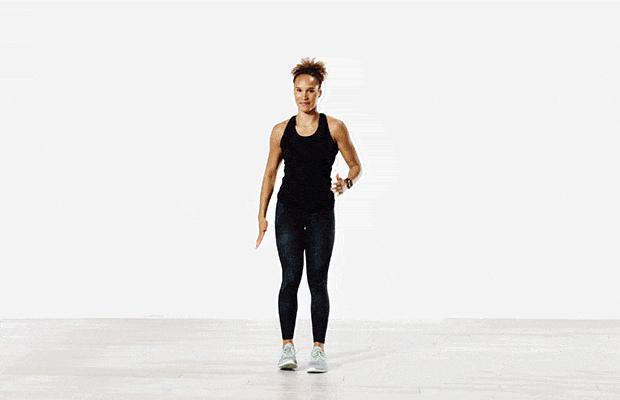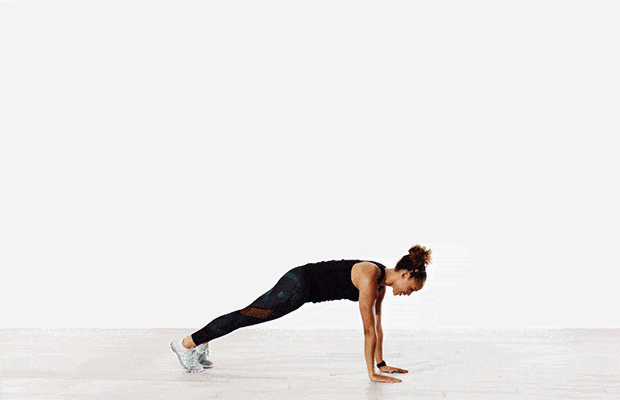5 Plyo Workout routines to Supercharge Your Exercise
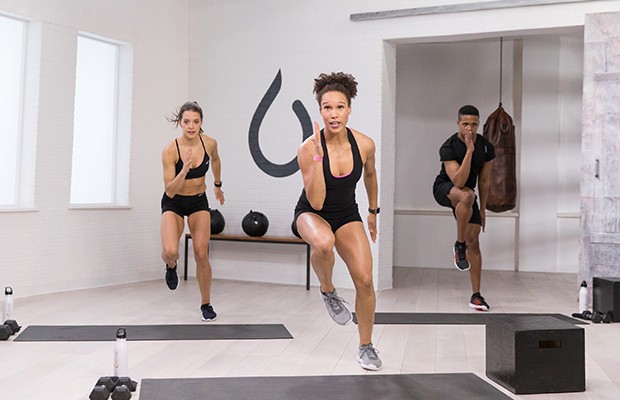
Photograph: Ryan Kelly / Energy Cardio
We’re about to take your exercise from fundamental to past. Plyometrics, also referred to as leap coaching, flip odd workout routines into powerhouse strikes.
And the magic begins deep inside your muscle fibers. Your slow-twitch (sort I) and fast-twitch (sort II) muscle fibers to be precise. Coaching your slow-twitch muscle fibers helps enhance how you utilize oxygen throughout cardio train. Then again, fast-twitch muscle fibers generate extra power and are activated throughout plyometric workout routines. Think about operating a race: Your slow-twitch muscle fibers gives you the stamina to get by way of every mile. As you method the end line, your fast-twitch muscle tissues kick in so you possibly can dash to the tip.
However quicker doesn’t all the time imply higher — it’s necessary to activate each muscle teams. CeCe Marizu, Day by day Burn 365 coach, says, “Quick-twitch muscle fibers put on out quicker than slow-twitch muscle fibers and are used when the physique is pushing to its max potential.” Right here’s your good exercise to maintain it easy — or energy up with a plyometric variation.
RELATED: Three Fast HIIT Exercises for Newbies
5 Body weight Workout routines to Make Plyometric
Right here Marizu reveals us learn how to take 5 body weight coaching strikes, then stage them up. Do 15-20 reps of every body weight train after which three to 5 reps of its plyometrics counterpart. Relaxation for a minute after finishing one spherical of every pair of strikes.
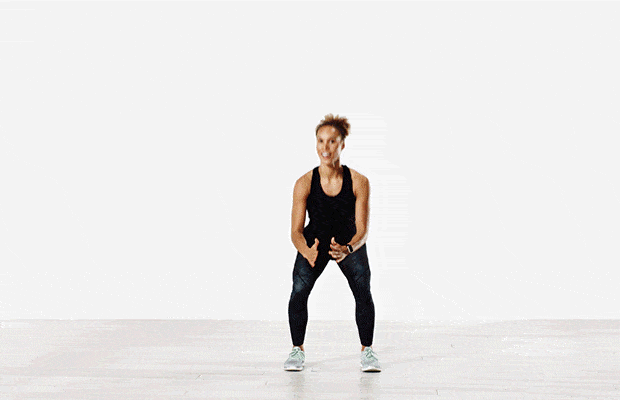
1. Squat to Squat Soar
The squat is likely one of the most necessary purposeful motion patterns to grasp. Once you decide up a bag of groceries off the ground, you’re squatting. Squats primarily practice the muscle fibers in your glutes, however in addition they work your hip flexors, core and again. Scale your squat up not simply by including weight or some top, too.
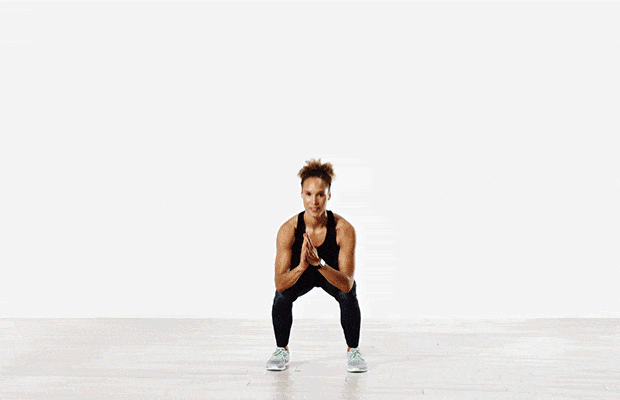
To make it plyometric: From the body weight squat place, launch the strain in your glutes by driving your hips ahead and swinging your arms behind you as you leap off the bottom. Marizu says the important thing to creating momentum is utilizing your arms. “Attempt leaping together with your fingers behind your head — it’s exhausting! Your arms act nearly like sails to take you up a notch,” she says.
RELATED: 6 Plyometric Workout routines for a No-Operating Cardio Exercise
2. Lunge to Plyo Lunge
In contrast to squats, which use a broader base of help, lunges are extra dynamic and power you to recruit extra muscle tissues in your core and quads to take care of steadiness. Get a leg up in your lunges by including some pace to your break up stance within the plyo model.
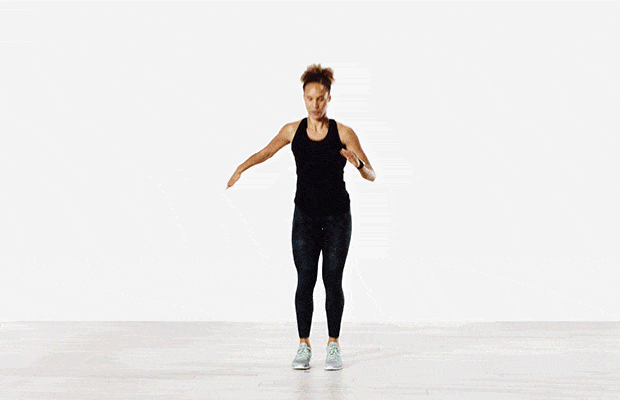
To make it plyometric: “Make sure that your stride is large enough between your back and front legs so you possibly can nonetheless really feel that connection together with your heel and the ground. Additionally, use your quads that will help you out,” Marizu says. As a result of plyo lunges could make you drained quicker (and require a bit extra coordination, too), Marizu recommends specializing in the depth of your lunge and to decelerate so that you don’t sacrifice type.
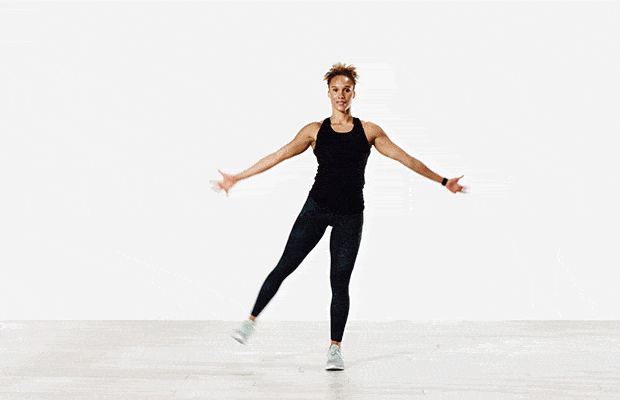
3. Step Jack to Star Jumps
Step jacks are utilized in each warm-up earlier than a exercise or run for a purpose. “They work the whole lot out of your glutes to your calves and interior thighs,” Marizu says. In the meantime, the plyometric variation, the star leap, additionally recruits your arms, deltoids (shoulders) and lats to assist pull your physique upward.
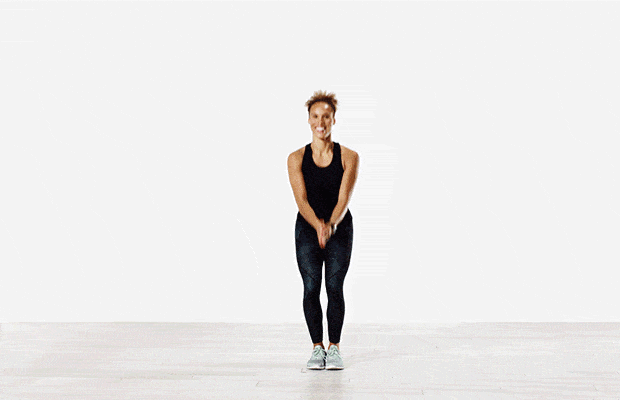
To make it plyometric: Marizu says barely bending your knees will assist forestall your fast-twitch muscle fibers from tiring too rapidly, so that you don’t lose top. “Consider your knees like a coil. Once you press down into them in a tighter place, the spring strikes just a little quicker and with extra power,” Marizu explains.
RELATED: Burn Energy Quick with This 10-Minute Plyometric Exercise
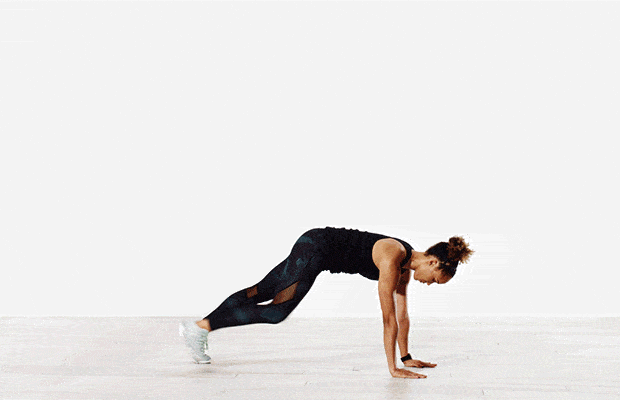
4. Plank to Plyo Spider Lunge
The final word isometric train, the plank is a real check of core energy. Begin by holding a plank for 30 seconds and work your manner as much as a full minute. The dynamic variation, the spider lunge, makes use of your higher physique and core to push off the ground to stabilize your physique. Simply bear in mind to maintain your core tight and your again and pelvis lifted all through the train.
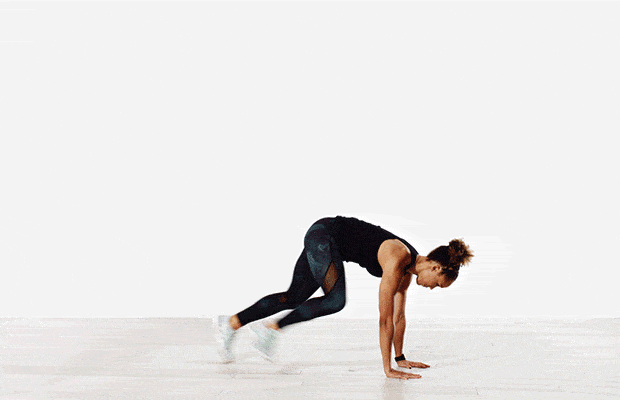
To make it plyometric: “Push the ground away from you to create room on your foot to come back up and maintain your joints in alignment,” Marizu says. One other professional tip: Pull your abdomen up and in to permit more room to fill your abs. “The small particulars on this transfer assist make it one powerful transfer at any tempo!” Marizu says.
RELATED: Three Plyometric Planks You Have to Attempt ASAP
5. Plank to Frogger
The frogger, additionally referred to as a squat thrust, is likely one of the most underrated body weight workout routines, Marizu says. It combines decrease physique energy, shoulder stability, hip mobility and steadiness. The low-impact step-up frogger train is an effective way to apply good plank and squat type. However when you’re able to energy issues up (and burn extra energy), go for plyometrics!
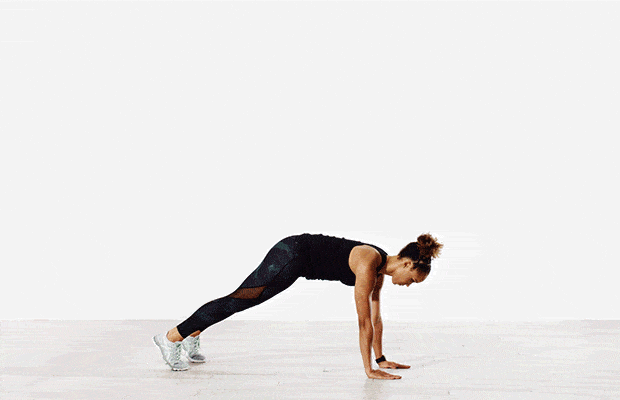
To make it plyometric: Hop your ft ahead from the high-plank place to generate extra power. Use the identical pushing movement within the plank to spider lunge to interact your core and get right into a squat place.
Learn Extra
Hate Squats? 7 Glute Workout routines for an Prompt Butt Carry
eight Arm Workout routines You Haven’t Accomplished Earlier than
5 Mountain Climbers for Severely Sculpted Abs

